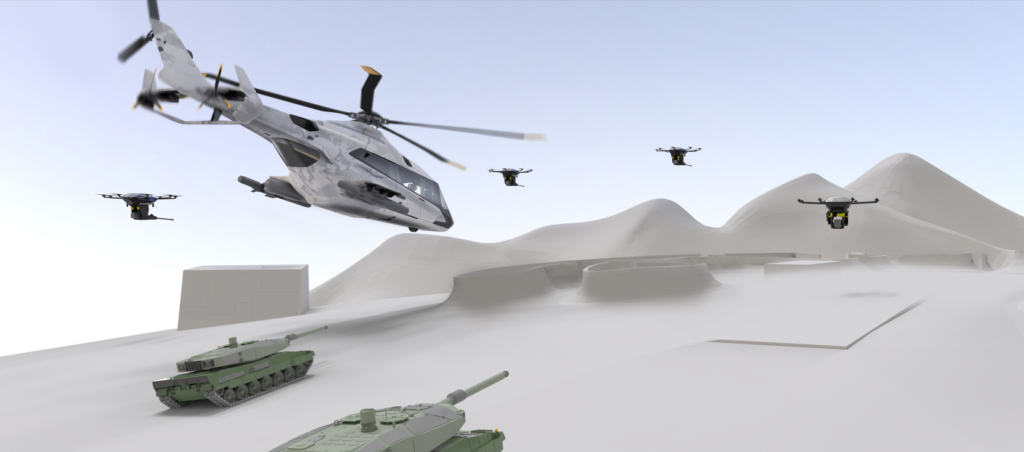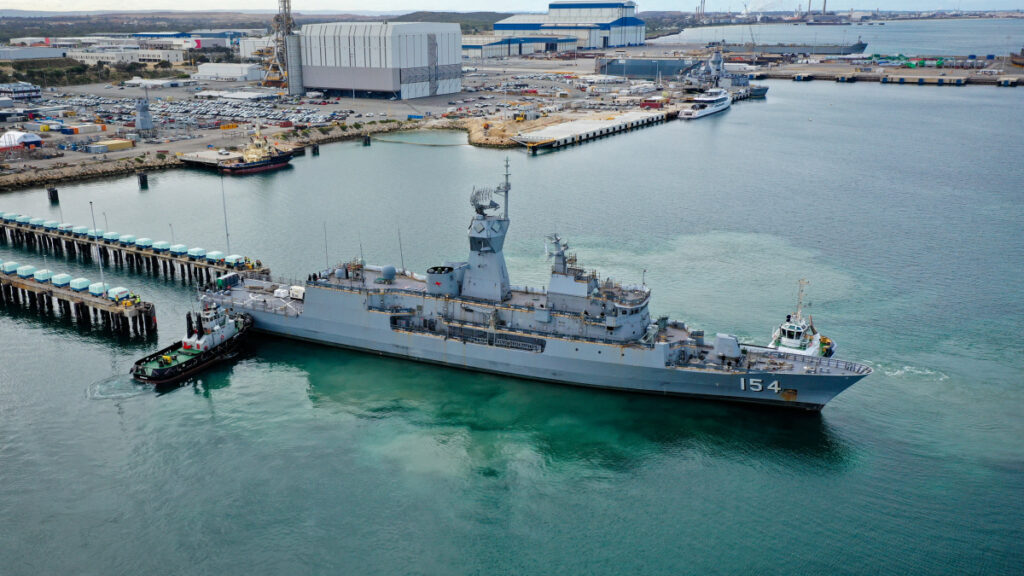SciTec is fielding software that performs manipulations needed to turn raw sensor data from national missile detection and tracking sensors into actionable tracks. (Image courtesy of SciTec)
In August of 2022, after a year-long fly-off of competing solutions, Space Systems Command (SSC) awarded a contract to deliver the next-generation mission data processing applications for missile warning to small business SciTec. In March 2023, SSC awarded SciTec an additional effort to further deliver sensor-specific processing applications, this time following a nine-month competitive fly-off.
To learn more about these efforts and their importance to the future missile warning architecture, Breaking Defense caught up with David Simenc, vice president of Defense Intelligence and Space Solutions at SciTec’s application factory in Boulder, CO.
Breaking Defense: You’ve been awarded these two contracts as part of SSC’s Future Operationally Resilient Ground Evolution (FORGE) program, specifically FORGE Mission Data Processing Application Provider and FORGE Sensor Specific Processor – Legacy SBIRS. Summarize what these efforts deliver within the larger context of FORGE?
David Simenc is vice president of Defense Intelligence and Space Solutions at SciTec’s application factory in Boulder, CO.
Simenc: The way to think of these efforts is as delivering ‘mission processing applications.’ We are fielding a suite of software services which perform all the manipulations required to turn raw sensor data from all our national missile detection and tracking sensors into actionable tracks. The apps also provide the warfighting interfaces necessary for our Guardians to operate the system 24-7-365 to provide clear, unambiguous, assured, and timely warning. Think of it as a real-time, fully-interactive picture of every missile launch in the world – as well as a number of other classified missions.
FORGE processing is completely rearchitecting and modernizing missile warning data exploitation to provide superior performance today and a firm foundation for the future. This is the first major missile warning software modernization effort in 20 years, and there are a lot of cobwebs.
The larger FORGE program is a full modernization effort for missile warning-ground. Within the sphere of mission data processing, our FORGE processing apps leverage a software platform built by Raytheon. Think of the platform as a private cloud architecture that provides a key cybersecurity layer. FORGE is also delivering a consolidated command and control system for 14 satellites through a separate acquisition.
Breaking Defense: It’s been a little over a year since the first award. How is the FORGE processing effort progressing?
Simenc: FORGE processing is moving with tremendous speed. The programs are on track to deliver into theater operations in 2024 and strategic operations in 2026. Two years to initial operating capability is an incredibly aggressive schedule, especially considering the foundational overhaul which is part of the product, and represents a huge improvement from historical ground delivery timelines. The last major Missile Warning software upgrade took 15 years.
Breaking Defense: What are the warfighter benefits that FORGE processing will bring?
Simenc: The apps are bringing generational performance enhancements. I can’t go into detail, but suffice it to say that with FORGE processing – which includes cutting edge image processing, signal detection, and AI/ML throughout the stack – we are dramatically increasing the sensitivity of the system – detecting more and stealthier threats sooner, and tracking them longer.
Warfighter effectiveness is critical to FORGE, and we’re fully modernizing the user interface. Our warfighters have gotten used to working with technology which is a decade or more behind what they get to experience playing video games. With FORGE we are delivering a cutting-edge interface built on the same technology that underpins popular online/RPG video games, with the same level of user experience.
The operators are directly involved in the design and development process, and through this user-focused modernization effort we’re addressing decades of accumulated operational pain points and inefficiencies and enabling young Guardians to apply their lifetime of intuition working with computers directly to the mission.
Throughout the FORGE app stack the keyword is ‘modern’ – modern software standards and architecture, supported by a full digital twin, extensive automated tooling, COTS-based foundations integrating the best commercial technologies, and robust cyber security. Modernization is an investment, but it more than pays for itself in the long run with increased robustness and security, reduced cycle times for tech insertion, and reduced sustainment costs.
The Government owns the baseline, which means that not only does it have unlimited rights to the software, but it has the build systems, test infrastructure, and documentation necessary to reproduce everything we do in the factory. This is a huge Government benefit, both in that the Government is only tied to us to the extent we perform, and in that it opens the aperture to a future community of development where any organization with superior technology for some part of the missile warning processing chain can find a transition path into FORGE.
Breaking Defense: There’s a lot going on with the space segment side of missile warning. SSC is pressing forward with fielding the NextGen GEO and Polar systems, as well as a resilient MEO layer, and SDA is fielding a proliferated low-Earth orbit tracking layer. How does FORGE processing fit in with these efforts?
Simenc: The FORGE processing apps will collect and exploit all the data produced by all these space segment elements. A common feature of these systems is that they produce more data than legacy sensors – more detections, more tracks, more false alarms. Part of the FORGE processing modernization mandate is that it be sensor agnostic to take in previously unseen sensors and that it be scalable to handle increased data load. We’re already proving we can handle the future sensors through simulation and will be ready to integrate the systems once they are on orbit.
SDA has already been able to get a direct benefit from the FORGE program by lifting-and-shifting some of the modular FORGE processing services to provide core functionality for their ground processing. This is a great example of the benefit of a modernized, government-owned software solution.
Breaking Defense: What are some of the key challenges you’ve had to face on FORGE processing, and how have you been successful?
Simenc: Well, the first challenge was an acquisition challenge. How does a non-traditional small business get the chance to prove its capabilities for the no-fail missile warning mission? The government made great use of OTAs (Other Transaction Authorities) to run an open competition based on hard data and blind testing. In parallel, the government’s Tools, Application, and Processing (TAP Lab) in Boulder, CO, opened the aperture to provide relevant data to non-traditional providers and incubated key technologies which became the superior FORGE apps solution.
Since we’ve been on contract, one of our biggest challenges has been with staffing. How does a small business staff-up to meet the demands of a large program, while requiring engineers to work on-site in classified spaces and in a niche mission area?
We’ve addressed that challenge by focusing on two key elements. First, by bringing a diverse team of partners to the table and working in an integrated team environment we’ve both tapped an expanded staff base and fostered the mission-first, mission-second, mission-last culture required to go fast.
Second, by employing modern software practices and technologies throughout our processing stack we’ve proven that we can take young, talented software engineers, make them immediately productive for our mission, and quickly turn them into young, talented, missile warning software engineers. The end result is that we have been able to staff, and staff effectively at an incredible rate.
Breaking Defense: Final thoughts?
Simenc: FORGE processing is delivering a generational leap forward for missile warning and proving that tapping an expanded industrial base delivers superior solutions for no-fail missions.


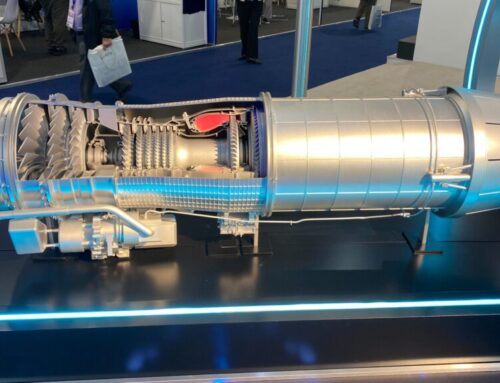
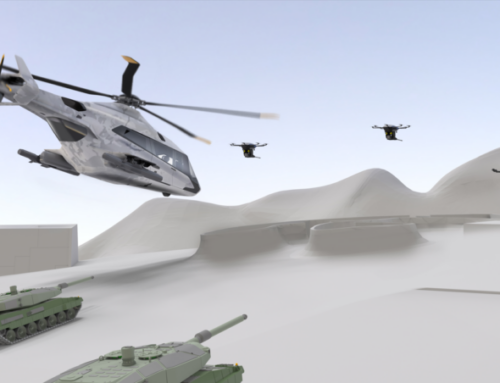
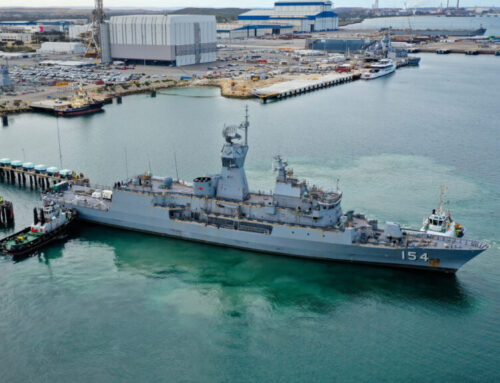
![The sights from the 2024 Farnborough Airshow [PHOTOS]](https://centurionpartnersgroup.com/wp-content/uploads/2024/07/IMG_8722-scaled-e1721930652747-1024x577-hZjwVb-500x383.jpeg)

